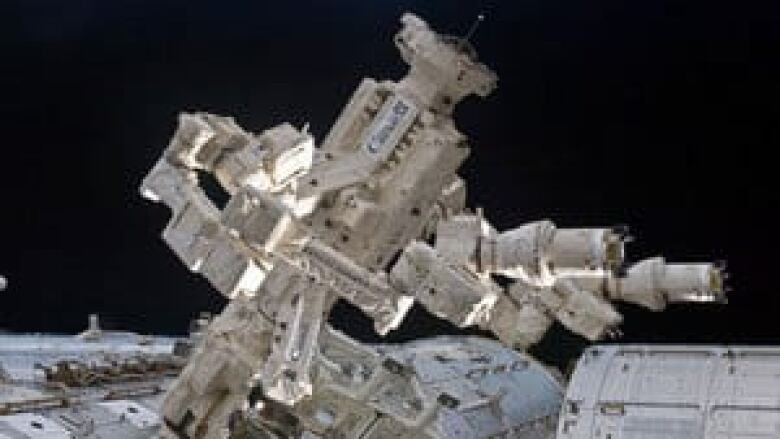Canadian on moon possible under latest space plan
Roadmap for future missions includes lunar space station and trips to Mars
Canada could be sending its first astronaut to the moon under an ambitious long-term plan being developed by a group of space agencies around the world.
A return to the moon within the next two decades is part of the recently updated Global Exploration Roadmap a far-reaching plan developed by more than a dozen space agencies.
Canada is among the 14 space agencies participating in the International Space Exploration Coordination Group, which first started developing the strategy in 2007. The first roadmap was released in 2011 and the latest update was made public last week.
An early phase of the plan would put a new space station into orbit around the moon, and use it as a staging point to ferry astronauts back and forth.
It's part of a roadmap that lays out human and robotic missions in the solar system over the next 25 years, with the other components including a moon settlement and a proposal by NASA to capture a near-Earth asteroid.
Jean-Claude Piedboeuf, the director of space-exploration development at the Canadian Space Agency, says there's an agreement among space agencies that returning to the moon is a stepping stone to a more distant target: Mars.
There would be human missions in the lunar vicinity and on its surface until 2030, at which point sights would be set on the red planet.
"You need to master how to land on a planet and the moon can be a test bed for that and how to live on the surface for a long time," said Piedboeuf, who noted that Canada is chairing the ISECG this year.
First moon visit since 1972
The CSA official suggested astronauts could again be moon-bound in about 15 years. It would be the first human visit to the shining orb since 1972, when NASA astronauts Eugene Cernan and Harrison Schmidt spent 75 hours there.
This time, there could well be Canadian visitors.

Their specialty: robotics.
"We're proposing a vision where Canada could have an astronaut, effectively a Canadian who will be in lunar space, either in orbit or on the moon and could operate a Canadian rover in the same way that Canadians operate a Canadarm on the space station," Piedboeuf said.
"We can foresee in the future doing the same type of thing on the moon, with the Canadian industry building a rover and a Canadian astronaut could be the operator of this rover."
The first stop on the pathway to Mars the International Space Station will continue to be manned until at least 2020.
Canada is working to get one of its two active astronauts, David Saint-Jacques or Jeremy Hansen, to visit the space station between 2016 and 2019.
"For the next 10 years, we can expect that human space flight will still be in an Earth orbit," Piedboeuf told The Canadian Press.
"But then, starting maybe in 2025 that's really a guess because there's a lot of work then we can start thinking about human orbit around the moon and basically doing some activity there, then starting back on the surface of the moon."
The plan would see a small human settlement established on the moon. Astronauts could use it to mine lunar resources while also learning how to survive away from Earth.
The scenario proposes the use of a "Deep Space Habitat," which would serve as a staging post. The habitat, a sort of mini-space station, could be placed at a so-called Lagrange point near the moon.
Lagrange points are locations where gravity balances itself out and where a space station could theoretically be stationary.
"We think that around the beginning of the '20s," Piedboeuf said, "we will have the capacity to send humans into lunar space."
Piedboeuf pointed out that Canada has been working with NASA and other space agencies to develop the next generation of rovers, which would go to the moon and Mars.
"In terms of human exploration, we are building the building blocks, the capability that we need to support human exploration," he said.













_(720p).jpg)


 OFFICIAL HD MUSIC VIDEO.jpg)
.jpg)



























































































